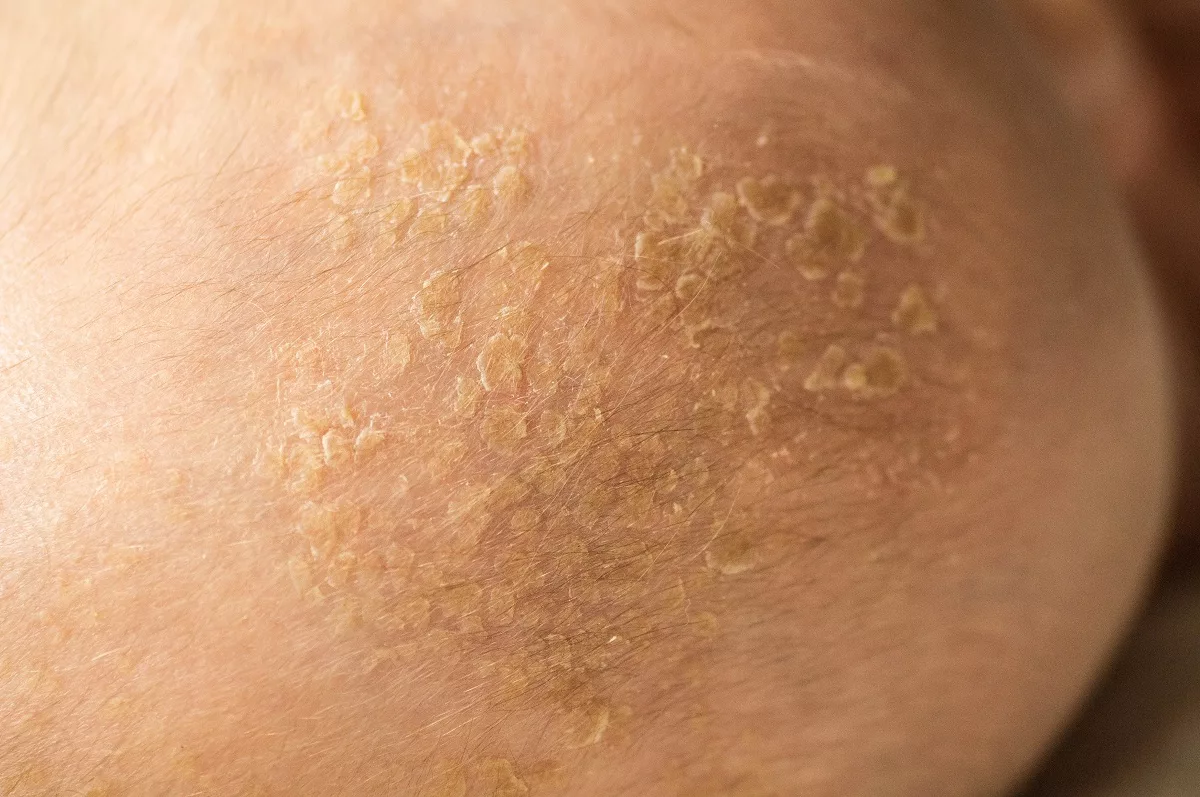A common skin disorder in which the skin becomes itchy, flaky, and scaly is called seborrheic dermatitis. It often affects the scalp and face, but may also appear in parts of the body where there are a lot of oil glands. While it is not contagious, it may come and go throughout life. Physicians usually treat it with medicated shampoos and creams. When it occurs on the scalp of teens or adults, it is called dandruff, but if it affects the child’s scalp, it is known as cradle cap.
Commonly, seborrheic dermatitis is lifelong, which means it comes and goes over time. There is no cure for seborrheic dermatitis, but with over-the-counter (OTC) and prescription medicines, this condition can be well managed.
Symptoms
People with seborrheic dermatitis usually experience the following symptoms. Examples include:
- Dandruff (greasy or dry scalp scaling)
- White to yellow flaking
- Itchy skin
- Plaques (thick and scaly patches of skin)
- Small yellow or dark to red raised bumps
- Hair shedding that is often caused by scratching in the affected areas
Moreover, babies who develop this type of dermatitis may have a thick, yellow, and crusted scalp rash (also called cradle cap) or diaper rash.
In most cases, this condition affects parts of the body that have more oil (sebaceous) glands. For example:
- Behind the ears
- Belly button
- Face and forehead
- Eyebrows
- Head and scalp
- Nose
- Upper back and chest
- Skin folds in the arms, legs, or groin area
- Skin under the breasts
Causes
Experts do not fully understand why seborrheic dermatitis occurs. However, some research suggested that too much yeast on the skin may contribute to its development. In general, everyone has a type of yeast called Malassezia that lives on the skin. Usually, it is not dangerous, but if it multiplies, it may lead to a skin reaction.
In most cases, yeast develops well in oily areas of the body. It also produces a substance that turns oil into a fatty acid. However, the skin does not like this fatty acid, which may lead to a reaction such as discoloration, itching, and flakes. Over time, this type of acid may weaken the skin’s outer barrier. As a result, the yeast can grow more easily.
Triggers
There are some triggers of the seborrheic dermatitis symptoms. These include:
- Harsh chemicals (including paint or cleaning products)
- Infections
- Prolonged exposure to the sun
- Cold or dry weather
- Prolonged stress
- Alcohol-based skin products
In addition, this type of dermatitis is not contagious. It means it cannot spread from one person to another.
Risk Factors
While it is not possible to identify the exact cause of seborrheic dermatitis, physicians have identified some factors that could increase the risk of developing it. Check below some of them:
- A family history of dermatitis – You are at increased risk of developing seborrheic dermatitis if you have a parent or sibling with this disorder.
- A medical history of skin disorders (including psoriasis, acne, and rosacea)
- Side Effects – In some cases, this condition may occur as an adverse reaction to certain medications. For example, immunosuppressants, PUVA, Lithium, and Dopamine Antagonists.
- HIV/AIDS
- Weakened immune system
- Neurological disorders (such as Parkinson’s disease)
- Naturally oily skin
Moreover, seborrheic dermatitis mostly affects males, infants (between 2 and 12 months of age), adolescents, and adults (over 30 years old).
What Are The Long-term Effects of Seborrheic Dermatitis?
Those who suffer from a lifelong skin disorder (such as seborrheic dermatitis) may also experience some complications. Check below some examples:
- Low self-esteem
- Bleeding
- Infections
- Hair loss
- Skin thinning
This document does not contain a complete list of seborrheic dermatitis complications. However, you can consult with your physician about ways to prevent these complications.
How to Prevent Seborrheic Dermatitis?
Usually, it is not possible to prevent this disorder, but you can take steps to reduce the risk. For example:
- Get plenty of rest and fluids
- Manage stress and chronic health conditions (such as diabetes, hypertension, and others)
- You should spend a little bit in the sun each day, but not in the middle of the day when the sun is strongest
- Use skin care products (including moisturizers)
It is also very important to follow the doctor’s recommendations, as they help reduce symptoms and improve your quality of life. Otherwise, the symptoms may return.
Diagnosis
First, doctors will perform a physical examination to check for abnormalities linked to the disease (such as plaques). They may also ask some questions about your family, medical history, and symptoms. If you do not notice improvements after treatment, physicians may perform a biopsy to make sure it is not another condition. During this procedure, physicians will take a small sample of affected skin to test it under a microscope.
Treatment
Commonly, this type of dermatitis does not disappear on its own. In general, the goal of treatment is to reduce the symptoms (such as itching and flaking). However, people with seborrheic dermatitis need treatment to prevent flare-ups. Check below some treatments often recommended for teens and adults:
- OTC dandruff shampoos are for people who experience mild symptoms. You can choose shampoos that contain Zinc, Coal tar, or Selenium.
- You may get a prescription for stronger antifungal shampoos for long-term management. They may contain Ketoconazole or Ciclopirox.
- Doctors may recommend steroid shampoos if you experience moderate to severe symptoms. These shampoos often contain Betamethasone valerate, Clobetasol, or Fluocinolone.
Consult with your doctor about how often you should use these shampoos and about adverse reactions you may experience.
Face and Body Treatments
Check below some treatments that doctors often prescribe for people who develop seborrheic dermatitis on the face or body:
- Topical antifungal products – Doctors often prescribe Clotrimazole or Ketoconazole to fight fungus.
- Topical Corticosteroids – These medications are used to reduce discoloration and swelling. In most cases, physicians recommend Hydrocortisone.
- Antifungal medications – Physicians may also prescribe Itraconazole, Fluconazole, and Terbinafine to improve the effectiveness of topical antifungal products and destroy fungus.
- Topical Calcineurin inhibitors – Doctors usually prescribe this group of medicines (including Pimecrolimus cream or Tacrolimus ointment) when corticosteroids are not an option.
- Phototherapy – This procedure involves an ultraviolet light that helps reduce the symptoms.
Frequently Asked Questions
When should I see my healthcare provider?
It is recommended to visit a doctor if the symptoms worsen or you have a flare-up. It is also recommended to see a healthcare professional if your skin becomes painful or swollen, over-the-counter (OTC) options do not work, or this type of dermatitis negatively affects your daily routine or mental health.
What is the main cause of seborrheic dermatitis?
Generally, the exact cause of seborrheic dermatitis is not known, but some recent studies have suggested that yeast Malassezia, excessive oil in the skin, or problems with the immune system may contribute to its development. For more details, discuss it with your healthcare professional.
What can be mistaken for seborrheic dermatitis?
There are some health conditions that can be mistaken for seborrheic dermatitis. For example:
- Contact dermatitis
- Atopic dermatitis (eczema)
- Rosacea
- Psoriasis
- Tinea versicolor
- Candidiasis
- Lupus erythematosus
- Impetigo
This article does not contain a full list of diseases that can be mistaken for seborrheic dermatitis. If you have additional questions, ask your healthcare provider.




